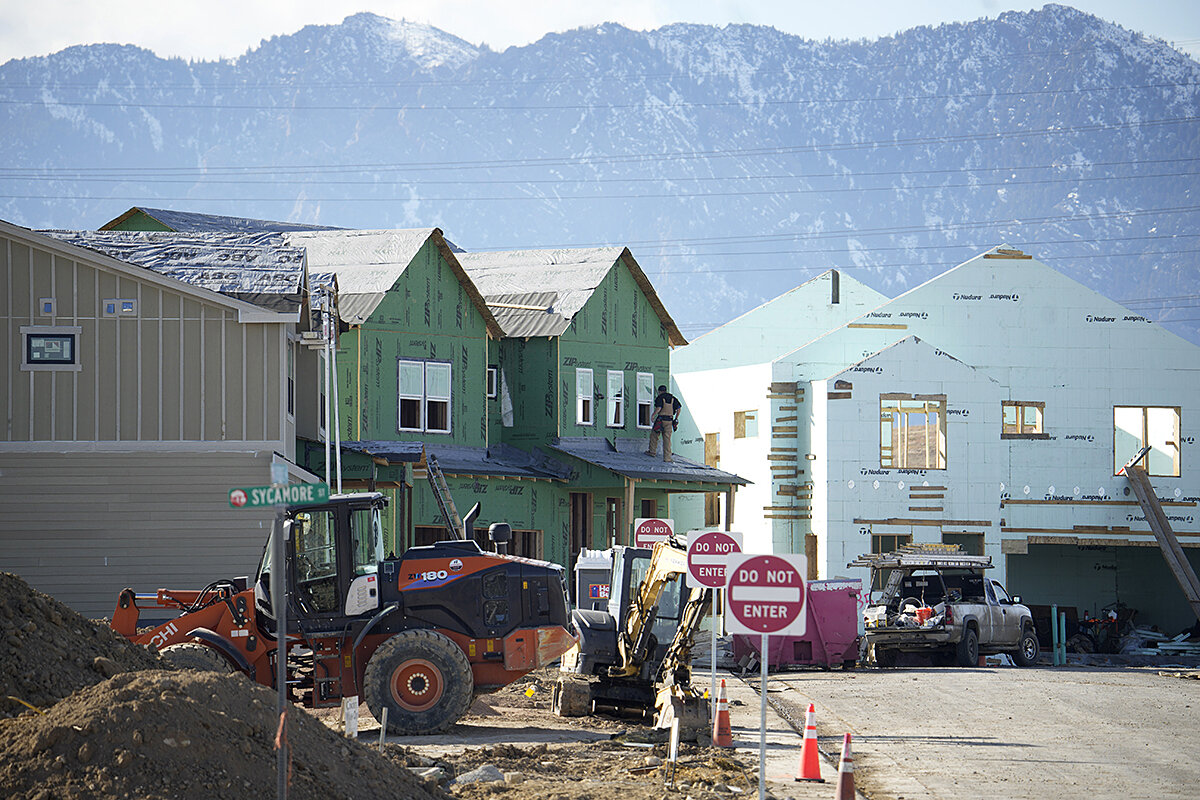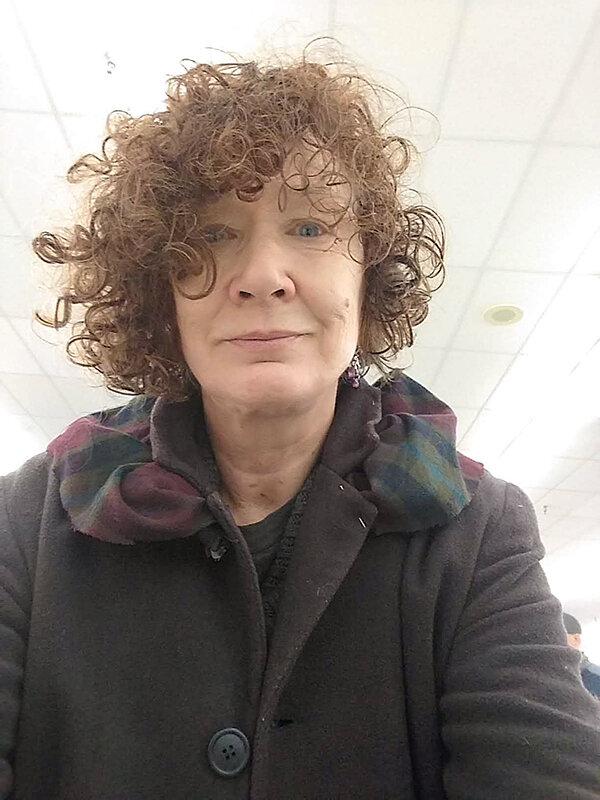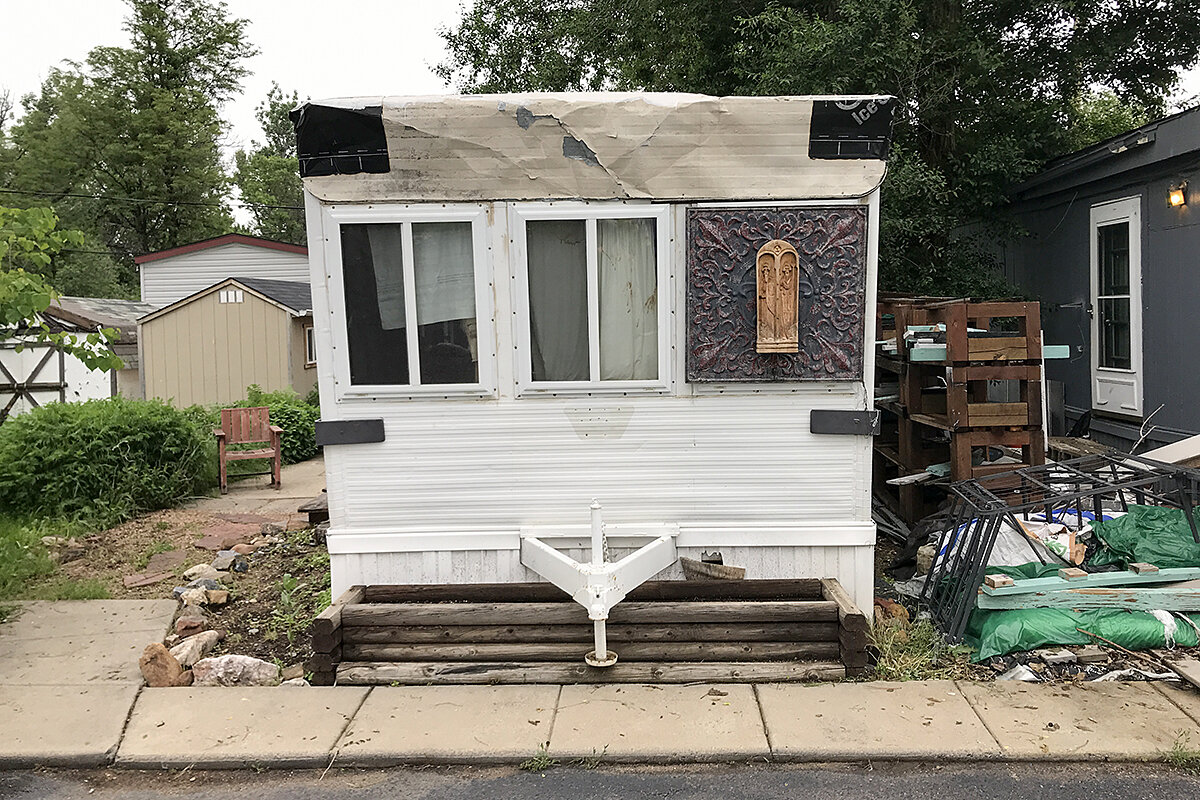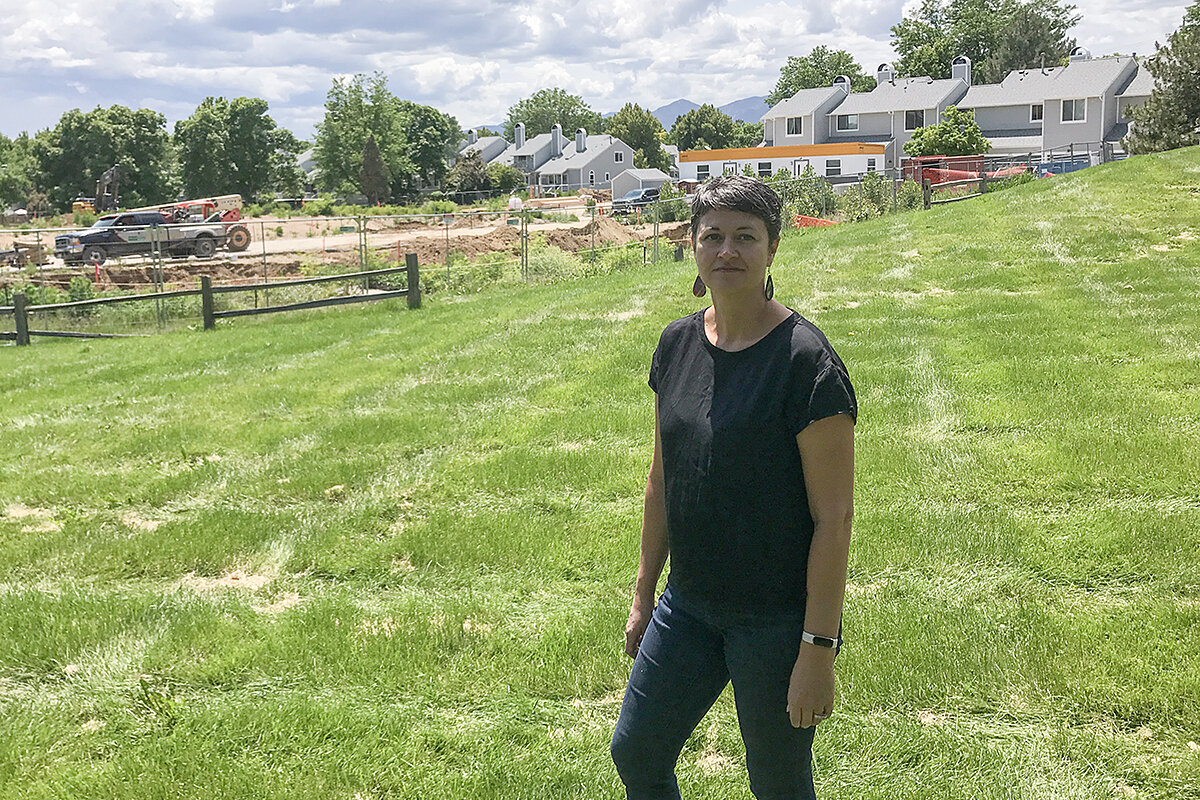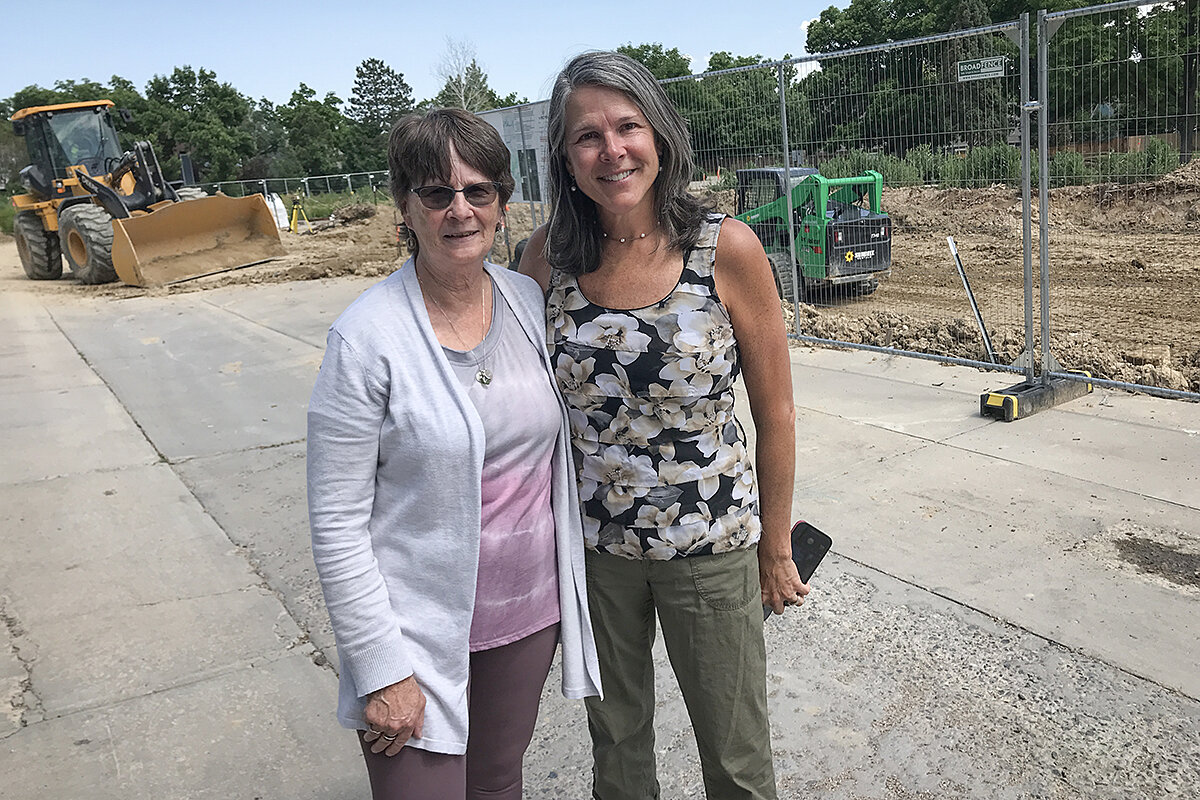Rebuilding after wildfire: Help is scarcest for those who need it most
Loading...
| Boulder County, Colo.
More than a year and a half after Boulder County’s Dec. 30, 2021, Marshall Fire destroyed 1,084 homes and damaged hundreds more, Jody Bill still has no clue if she will get the help she needs to replace her mobile home. The 115 mph gusts that spread the fire peeled the roof off the 1960s-era mobile home Ms. Bill had purchased just four months earlier as her retirement home.
She was attracted to the unobstructed views of a gorgeous stretch of the Rocky Mountains known as the Flatirons. And she’d like to stay in her community, where neighbors shoveled the snow out of her home when storms hit right after the disaster. But now Ms. Bill lives in fear of the heavy winds that periodically rush down the mountains and rattle her patched-together house.
“It makes me nervous,” she says. “It doesn’t feel safe.”
Why We Wrote This
After a major wildfire, low-income residents are the ones who find insurance and loans hardest to access. That’s a challenge not only for them but for the whole community.
Even though Ms. Bill’s home didn’t burn, she’s eligible to seek disaster relief. Still, she has been turned down three times for federal Small Business Administration disaster relief loans, which are available to homeowners as well as businesses. And she has already spent nearly half of her insurance payout for temporary housing and makeshift repairs. She dreams of replacing her house with a safer structure. But to her, it seems that single-family homeowners have been prioritized.
“Mobile homes, I think, are on the bottom. They don’t care,” Ms. Bill says. “A house is worth more – they did lose more – but I just feel like the people with mobile homes aren’t given much assistance.”
A short drive away, one can see why Ms. Bill might think that. In the hilly, upscale neighborhoods of Louisville and Superior, where hundreds of houses were devoured by the fire, rebuilding is in full swing. New homes in all stages of construction – from foundations to finished – fill many lots. Local officials predict that the speed of reconstruction will far outpace many other post-disaster recoveries.
But the pace is uneven. Recovery is slower for many middle- and low-income homeowners. And those in mobile homes, like Ms. Bill, or in multifamily buildings have not received assistance as quickly as single-family homeowners in wealthy areas. Even funds targeted for lower-wealth individuals become available only after a long wait. That disparity in pacing could alter the economic diversity of the area, which was already low on affordable housing.
“If you’re only able to successfully navigate this rebuilding process if you’ve got resources, then that’s really going to further jeopardize our ability to be a community for all,” says Katie Dickinson, a resident of Louisville, one of the towns hardest hit by the fire, though her house was spared.
Many experts, including Dr. Dickinson, warn that as fires, flooding, hurricanes, and other disasters become more damaging due to climate change, lower-income people will be least able to rebuild and remain in their communities. Leading up to the Marshall Fire, Colorado had experienced record-dry summer, fall, and early winter, which left the soils and vegetation extremely dry and prone to burn.
“It was the latest first snow on record for most of the area,” said Russ Schumacher, a Colorado state climatologist. “Having a snowstorm or two in the fall, [as] would happen in most years, may have compressed the grasses down so they weren’t so prone to rapid fire spread, but that didn’t happen in 2021.”
Good intentions
Before the Marshall Fire, Boulder County was committed to finding out how its lower-income residents might be extra vulnerable to the risks that many communities face due to climate change. Paul Chinowsky, professor emeritus in civil engineering at the University of Colorado Boulder, was gathering data and crunching numbers to map the low-income areas that are most vulnerable to climate disasters when the Marshall Fire sprinted across more than 6,000 acres.
In the early aftermath of the fire, the county used his mapping tool to identify streets, clusters of homes, and subdivisions where residents might lack the means to recover quickly, Dr. Chinowsky says. “If we want them to be able to rebuild, we need to aggressively outreach to those areas,” he adds.
Yet despite these early efforts, many lower-income residents have yet to even begin to recover their modest lifestyles. In a high-cost community with very little affordable housing, the knowledge of which people likely would face the biggest hurdles hasn’t prevented inequity in the rebuilding. For Dr. Chinowsky, this underscores a truth that many communities try to ignore: Lower-income, less-resourced residents are less likely to recover after disasters. “That’s a piece of the climate change impact that is generally lost,” says Dr. Chinowsky, who founded and directs Resilient Analytics, which helps communities understand their climate change risks.
After a disaster, even relief funds reserved for low- and moderate-income people are hard to come by, experts say, since they are typically intended as a last resort after insurance and all other supports have been used. But it takes time to prove that these funds are the only option left, and the paperwork required to access them is considerable. That slows down both the completion and processing of applications. For some, the wait is longer than they can afford. More burned-out properties were sold in lower-income areas than in wealthy ones, Dr. Chinowsky says.
A comparison across income levels
Having lived in Louisville with her husband and three children since 2010, Dr. , an assistant professor at the Colorado School of Public Health, saw her personal and professional lives align following the fire. As a researcher focused on how climate change disproportionately burdens lower-income people, she decided to track equity in the rebuilding effort in her hometown.
Dr. Dickinson twice people whose homes were lost or smoke-damaged. She found that after a year, only 12% of households with annual incomes lower than $75,000 had permits to rebuild – versus nearly half of households with incomes between $150,000 and $200,000. Lower-income households were also more likely to be severely underinsured. While nearly half of households with incomes above $150,000 expected insurance to cover at least 75% of their rebuilding costs, only a quarter of households with annual incomes of less than $75,000 thought their insurance would cover that much.
“It’s a tragedy for everyone who lost a home, and it’s a grueling process. But as someone who is part of this community, what I’m trying to look at is, what’s our community going to look like after this event ... if we disproportionately are losing ... folks with lower incomes,” Dr. Dickinson says. In particular, she worries that teachers, firefighters, retired people, and young families will be priced out.
Some local officials stress that it’s too early to know definitively how the fire will affect the demographics of the area. But early signs indicate an increase in property values. And although few rebuilt homes have gone on the market, Cynthia Braddock, Boulder County’s assessor, mentioned one that before the fire, was in one of the most affordable areas. After the fire, it listed for $1.2 million, about twice the pre-fire asking price of homes in that neighborhood.
Delays for residents in multifamily dwellings
One option for people in lower or middle-income tiers is to rent or purchase units in multifamily buildings. While that typically provides more affordable housing than single-family homes, it significantly delays disaster relief.
Wildflower Condominiums, the only multifamily complex that burned, lost 30 of its 93 units.
And the earliest residents can hope to move back in is the summer of 2024, 2 1/2 years after the fire, says Mark Appelfeller, the president of the Wildflower Condos Homeowners Association and one of those who lost their home. Rebuilding multifamily dwellings takes longer than free-standing houses, and it took six to eight weeks longer to clear the ashes and debris from the burned buildings. “It was ugly, and it was smelly, and it was dangerous,” Mr. Appelfeller says.
The complex also experienced the growing problem of insurance companies’ refusal to renew policies. In Wildflower’s case, not only was their policy not renewed, but also no other regular insurance company would cover the complex. A package from several different insurers was put together, but it costs $4,700 a year per unit, seven times more than the former policy, Mr. Appelfeller says.
“This insurance thing is outrageous,” Mr. Appelfeller says.
“This is a growing problem in the state,” writes Vincent Plymell, assistant commissioner for communications for the Colorado Division of Insurance, in an email. The uptick in nonrenewals following the fire was so severe that the state Legislature directed the insurance division to study the problem. Completed in April, its report “confirms what we suspected – that the homeowners’ insurance companies are re-evaluating their risk tolerance,” Mr. Plymell writes.
A 2023 state law mandates the creation of an insurer of last resort but not until late 2024 at the earliest, leaving those at Wildflower with significantly higher insurance costs, even people who can’t live in their homes because of the fire.
Kathy Krajewski, an older adult who runs a preschool, was in her unit in Wildflower the afternoon of the fire when a neighbor alerted her that she needed to evacuate. She figured the worst they’d get was smoke, so she grabbed her electronics but didn’t think to take keepsakes. “My wedding ring. My engagement ring. My mother’s engagement ring. A lot of mementos ... I left behind,” she laments.
Later, however, while sifting through ash, a volunteer found her wedding ring.
“It was amazing!” Ms. Krajewski says.
Since then, she and her husband have been living in an apartment. Her insurance covers the rent but only for two years. She’s concerned about finances after that, but she adds that it helps to know she and her husband both have jobs.
“When all is said and done, we will have been in temporary housing for 2 1/2 years, probably. That doesn’t sound temporary,” Ms. Krajewski says bitterly.
Can economic diversity survive the fire?
Federal and state programs do provide extra money for lower-income residents. People who earn less than 150% of the median income in the area could qualify for grants of up to $100,000, depending on their income. Also, low-interest loans of up to $50,000 are available for those who qualify. But not until mid-July was the state in the final stage of distributing these public funds to the first dozen households, according to the Colorado Department of Local Affairs. An additional 71 applicants had been conditionally approved.
“Some of the government programs are just really slow to roll out,” says Phyllis Kane, who runs , which provides one-on-one guidance for people who lost homes. “It’s a slog to go through that application process, and it takes quite a while.”
Katie Arrington, Boulder County’s assistant recovery manager, concurs. “Some of the biggest free money available for residents is the slowest money to come in,” she says.
It disturbs Ms. Arrington that low-income residents, older people on fixed incomes, and immigrants disproportionately suffer as a result. “This is really hard stuff ... to figure out,” she says. “The structural systems of inequity and racism that this country was built on play out in disasters. ... We move the needle a little every time. But it’s a little bit.”
It’s unclear whether the needle will move enough this time to allow Ms. Bill to replace her mobile home. She has her heart set on a converted shipping container made of steel. “If I had the container,” she says, “the walls won’t shake.” She’d be able to stay put and no longer panic when winds whip through her neighborhood Sans Souci, which means “carefree” in French.
Enabling Ms. Bill to stay in San Souci isn’t important only to her.
Dr. Dickinson hopes the fire won’t eliminate the diversity of her community. “It’s really important to the fabric of society that we have folks at different income levels,” she says.



